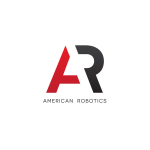American Robotics and Scientific Applications & Research Associates (SARA) Partner to Further Advance Fully-Autonomous Drone Operations in U.S. National Airspace

SARA’s unique aircraft detection technology enables American Robotics’ Scout System drones to maintain a safe distance from other aircraft at all times.
MARLBOROUGH, Mass. & CYPRESS, Calif.–(BUSINESS WIRE)–#AcousticSensor—American Robotics, a commercial developer of the first FAA-approved fully-automated drone system, and Scientific Applications & Research Associates (SARA) today announced a partnership to unlock the $100 billion commercial drone market by advancing Beyond-Visual-Line-Of-Sight (BVLOS) operations in the National Airspace System (NAS). American Robotics’ Scout System uses SARA’s Terrestrial Acoustic Sensor Array (TASA), an acoustics-based aircraft detection technology, to effectively identify other aircraft and maintain a safe distance from them while in flight. This sensor technology combined with advanced safety features of American Robotics’ Scout System enables a best-in-class Detect and Avoid (DAA) capability that is fundamental to meet and exceed the Federal Aviation Administration’s (FAA) expectations for safe drone flight in the National Airspace System (NAS) with no visual observers on the ground.
This partnership and American Robotics’ recent landmark FAA approvals for BVLOS flight represents a pivotal inflection point in the commercial drone industry, as well as the FAA’s broader acceptance and understanding of autonomous drone technology. Advanced and proven DAA technology is a critical enabling factor for unattended operations and widespread drone adoption in commercial markets. This technology must be viewed from a systems perspective, encompassing a sensor’s ability to detect other aircraft, the drone’s ability to maneuver around the detected aircraft, and safely keep their distance in real-world environments.
The integration of SARA’s TASA into American Robotics’ Scout System enables superb maneuverability and system performance that exceeds the guidelines set by industry standards and was a key factor in proving to regulators that American Robotics’ drone-based aerial intelligence platform would operate safely in the NAS without visual observers on the ground.
“The FAA has rigorous requirements for drone companies to prove they can operate safely in the NAS without visual observers or pilots on the ground, and with other manned aircraft. For the drone industry to reach its multi-billion dollar potential and meet the safety regulations set by the FAA, there must be an ecosystem of competent and capable technology partners who work together to make automated commercial drones a reality,” said Vijay Somandepalli, CTO and co-founder of American Robotics. “The American Robotics and SARA partnership exemplifies the importance of working together to continue to propel the commercial drone industry forward.”
SARA’s TASA works by detecting aircraft even when line-of-sight is obscured by trees, buildings, darkness, fog, and terrain features. Combining patented microphone technology and advanced signal processing algorithms, a single TASA unit detects aircraft bearing, approximates range, and determines aircraft threat status over a full 360 degree field-of-regard. TASA is tightly integrated with the American Robotics Scout System to ensure information transfer between TASA and Scout occurs reliably and with very low latencies. Once a manned aircraft is determined to be a threat by TASA and that information is passed to Scout, the Scout drone then executes a proprietary avoidance maneuver to steer clear of the threat aircraft. This ensures that both aircraft remain separated in space to assure the safety of both aircraft.
Jay Cleckler, Chief Technologist at SARA, said: “For drones to successfully collect valuable data, they must be able to function autonomously and operate in a safe and harmonious manner with other manned aviation that operate at low altitudes where drones typically fly. TASA has been proven capable of reliably detecting manned aircraft that are miles away in various demonstration tests with the FAA, and requires little infrastructure or power to operate. American Robotics is a great partner and their dedication to developing safe and reliable drone technology will truly help to advance the industry and commercial drone applications.”
To learn more about American Robotics and its Scout System drone, click here. To learn more about SARA, click here. For media assets, click here.
About American Robotics
Headquartered in Marlborough, MA, American Robotics is a commercial developer of the first FAA-approved fully-automated drone systems, providing ultra high resolution aerial data to enterprise customers. Through innovations in robot autonomy, machine vision, edge computing and AI, American Robotics has created the next generation of drone technology: a fully-automated robotic data platform capable of continuous, unattended operation. Using this technology, American Robotics provides enterprise customers with the ability to continuously monitor, digitize and analyze their assets in real-time. American Robotics was founded by Carnegie Mellon and Stanford roboticists with a shared vision for bringing robotic technology out of the lab and into the real-world to solve the world’s biggest business challenges. On May 17, 2021, American Robotics announced it had entered into a definitive agreement to merge with Ondas Holdings Inc. (NASDAQ: ONDS). To learn more about American Robotics, visit www.american-robotics.com and connect on Twitter and LinkedIn.
About SARA
Located in Cypress, CA, the Artificial Perception and Threat Awareness (APTA) Division of Scientific Applications and Research Associates (SARA) develops sensing and collaboration systems to enable the future of autonomy today. SARA serves both the military and commercial aerospace markets with RF geolocation systems, acoustic-based threat detection systems and other non-traditional sensors for unmanned aircraft systems (UAS). Leveraging over twenty-five years’ experience developing airborne acoustic sensors, many of the world’s foremost acoustic scientists, advanced AI and state-of-the-art edge processing, SARA developed the world’s only acoustic-based aircraft detect-and-avoid systems. These systems provide the airspace awareness and deconfliction needed for BVLOS and fully autonomous UAS operations; uniquely addressing one of the most vexing technical, business and regulatory challenges blocking the integration of UAS into the national airspace. To learn more about SARA visit www.sara.com and connect on LinkedIn.
Contacts
Chelsea Higgins
BIGfish Communications for American Robotics
americanrobotics@bigfishpr.com
617.713.3800
Mandy Krause
Scientific Applications and Research Associates
MKrause@sara.com
714-224-4410

